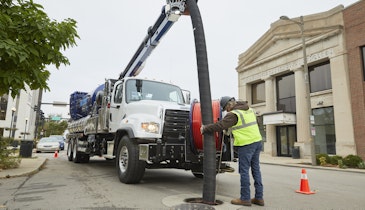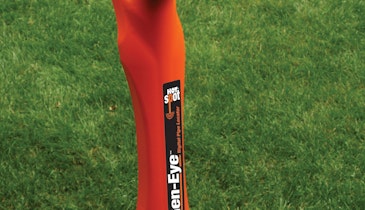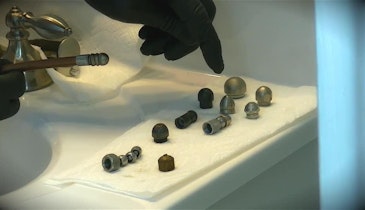Interested in Cleaning?
Get Cleaning articles, news and videos right in your inbox! Sign up now.
Cleaning + Get AlertsBathtub drains can be a pain to completely open, depending on how old they are and how they were piped.
A system will not be appropriately piped and vented in most older houses. Bathtub drains are required to have both a drain as well as an overflow pipe in case the tub fills up too high. Instead of the water overflowing onto the floor and causing major property damage, the water enters the overflow near the flood rim of the fixture and safely goes down the drain.
The drains coming from a tub are usually 1 1/2 inches in diameter with an external trap (solvent weld or compression). Older homes might have what we call a drum trap. A drum trap is a trap seal that utilizes a device that looks similar to an enlarged soup can, usually made out of copper or lead. The water enters the bottom of the fitting, filling upward until it reaches the pipe coming out of the top.
Once it fills up to this upper pipe, the graywater almost skims out and into the DWV system. The drum trap also has a screw plug on the top that can be removed to clean out the debris that may be stuck in the drum. You should not install new drum traps on any newly installed tub drains; modern piping methods call for a standard P-trap.
Clog culprits
As for why a tub drain clogs, you have a variety of considerations. Since people likely use the shower daily, there is almost always a buildup of hair. There are two places hair will clog a drain: Right at the drain opening where the grid strainer conceals a crossbar, and the second is usually somewhere between the branch headed to the stack. When hair collects in one spot, it can not only slow the water flow down to a near halt, but it will also start to collect soap, dirt, grime, or any foreign material, causing a significant backup. Many times, the two accumulation points are the crossbars in the tub opening and the trap.
The next way a tub drain will clog is soap. Over an extended period, soap suds washed off your body will coat the inside walls of the pipe (regardless of what material the pipes are made of). Once the soap coats the inside of the pipes, it begins to collect dirt, grime, and slime from regular showering. The soap sticks to the pipe walls, the dirt and grime will stick to the soap, then more soap sticks to the dirt, and then more dirt sticks to the soap and so on until you start to have a clogged artery. Depending on how often the tub is in use, this clogged artery material can be as hard as concrete or a very thick soft buildup that can be very difficult to open completely with a small-diameter rod alone. This type of buildup is almost like clay dirt; water will not get through. Even if you punch a hole through the muck, only a tiny amount of water will travel through. The outside diameter of the pipe might be 1 5/8 inches, but the inside might only be an 1/8th of an inch due to the buildup.
The venting system
Another common issue for tub drains clogging is the venting system. If a tub drain is not properly vented, it will cause more frequent backups. The reason is that the drain is not getting air to displace the water. It works on the same principle as putting your thumb over the end of a straw. If you do not have air to replace the water trying to escape, you will pull a vacuum, and the water will not flow. We have a tiny bit of air infiltrating the system by siphoning the nearby traps dry, but not enough to allow the water to flow freely. Think of an old-school gas can that had the air inlet on the backside. If you try to pour gasoline without the air inlet, it will eventually empty but not easily. If you pull the air opening tab, the gasoline will flow right out.
Same thing with a tub drain; not enough air is getting in, so the tub will either make a funnel to try and get its air, or it will pull enough of a vacuum to suck the water seal out of a nearby trap (usually the nearby lavatory trap). When the drain starts to “clug,” over and over and over again, the water goes down the drain in chunks with air pockets in-between, causing a candy-cane-looking clog of hair, grease, and soap scum.
About the Author
Anthony Pacilla is a registered master plumber for McVehil Plumbing in Washington, Pennsylvania. He has over two decades of experience in the plumbing and HVAC trades, and has a bachelor’s in business and economics from Thiel College.






